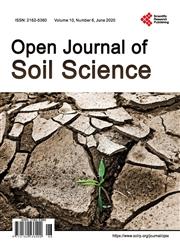Snake River: A Navigation and Spawning Dilemma
引用次数: 1
Abstract
The Snake River in northwestern United States is 1735 km long, the largest tributary of the Columbia River and is the 13 th longest river in the United States. The Snake River drainage basin includes parts of six U.S. states. The Snake River Plain was created by a volcanic hotspot that lies beneath Yellow-stone National Park. The previous Ice Age carved out canyons, cliffs and wa-terfalls along the middle and lower Snake River. The Missoula Flood was to the north and Bonneville Flood to the south altered the Snake River and surrounding landscape. The Snake River has a drainage basin of 282,000 km 2 in the states of Oregon, Washington, Utah, Nevada and Idaho. The Snake River drops from mountain elevations of 3000 m to its confluence with the Columbia River. The river is one of the most biologically diverse freshwater systems in the United States with trails designed to promote recreational tourism, increase use of the Snake River and create generations of people who care about the river and are willing to protect and provide environmental stewardship of the river watershed resources.蛇河:导航和产卵的困境
美国西北部的斯内克河长1735公里,是哥伦比亚河最大的支流,也是美国第13长的河流。斯内克河流域包括美国六个州的部分地区。蛇河平原是由位于黄石国家公园下方的火山热点形成的。之前的冰河时代沿着蛇河中下游形成了峡谷、悬崖和瀑布。北部的密苏拉洪水和南部的博纳维尔洪水改变了斯内克河和周围的景观。蛇河在俄勒冈州、华盛顿州、犹他州、内华达州和爱达荷州有28.2万公里的流域。斯内克河从海拔3000米的山上流下,与哥伦比亚河汇合。这条河是美国最具生物多样性的淡水系统之一,其设计的步道旨在促进休闲旅游,增加对蛇河的利用,并创造一代又一代关心河流并愿意保护和提供河流流域资源环境管理的人。
本文章由计算机程序翻译,如有差异,请以英文原文为准。
求助全文
约1分钟内获得全文
求助全文

 求助内容:
求助内容: 应助结果提醒方式:
应助结果提醒方式:


